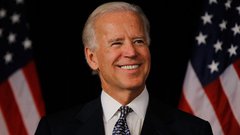Our recap of this week’s Sydney Energy Conference
Published 18-JUL-2022 11:01 A.M.
|
19 minute read
This week, the Australian government and the International Energy Agency (IEA) hosted the first ever Sydney Energy Forum.
Global business leaders, politicians, economists, financiers and industry experts discussed the key challenges to move to a renewable energy world.
The key themes from the event were:
- Energy security and the pathway to a renewable transition
- Diverse and resilient energy supply chains
- Transformative role of clean energy technologies and energy storage (batteries)
We watched all 14 hours. Today we break down the key points and how the topics might impact our clean energy, critical metals and natural gas Portfolio companies.
The Prime Minister set the stage, highlighting Australia’s ambitions to be a renewable energy superpower. He was optimistic about the global energy future, and the importance of international collaboration.
International speakers provided insights into challenges and opportunities of all aspects of the renewable energy future.
It's clear that big questions are being asked of governments and industry around how to move to a renewable economy while facing rising inflation, energy security, and supply chain constraints.
Notably, the conflict in Ukraine is the big ‘spanner in the works’, spurring and disrupting the drive towards a renewable future.
Some felt the answer to the ‘global energy crisis’ is to go all in on green energies like solar, wind, and hydrogen.
Others think conventional energies like natural gas and oil can be used as a transition to renewables.
The path to a renewable energy future is a delicate balancing act. Policy makers must calibrate their positions between competing interests like energy affordability, grid reliability, energy security, supply chain security and geopolitical risks.
But one thing is certain — the role critical minerals will play in a renewable energy future.
To reach the ambitious net zero targets the world needs A LOT more mining.
Car makers can build a battery factory within 24 months, but bringing a new mine into production can take 10 years.
This disconnect, between downstream operators and upstream mineral suppliers, highlights one of the challenges in meeting net zero targets and the importance of mining investments.
Supply chain security is important too with concerns around the concentration of battery metals’ processing and manufacturing in China.
The IEA say China manufactures 80% of the world’s solar photovoltaic (PV) panels, which is set to grow to 95% by 2025.
With the Ukraine conflict in mind, this supply chain concentration - especially over energy and raw materials for renewables - carries a geopolitical risk Indo-Pacific region countries.
According to Bloomberg, the Biden administration will support miners in stopping China from weaponising battery metals in the way that Russia has weaponised natural gas.

The world is realising that a renewable future requires a diversity of local inputs and manufacturing.
At Next Investors our Portfolios were constructed with a big focus on Energy Transition Metals and finding projects that could support materials supply.
We think our Investments will can help in balancing the move to renewable energy, particularly the critical mineral inputs required for the ‘pace and scale’ to meet ambitious net zero targets.
Events like the Sydney Energy Forum validate our investment thematics and emphasise the importance of net zero goals.
Altogether the event gave fantastic insight into senior decision makers and advisors working to solve these problems.
If you would like to watch the entire conference see day 1 and day 2 here.
But for those without a spare 14 hours, we’ve summarised the key takeaways from our favourite speakers/panels from the event:
Critical minerals and the ‘pace and scale’ needed to accelerate development of EV’s and grid scale batteries.
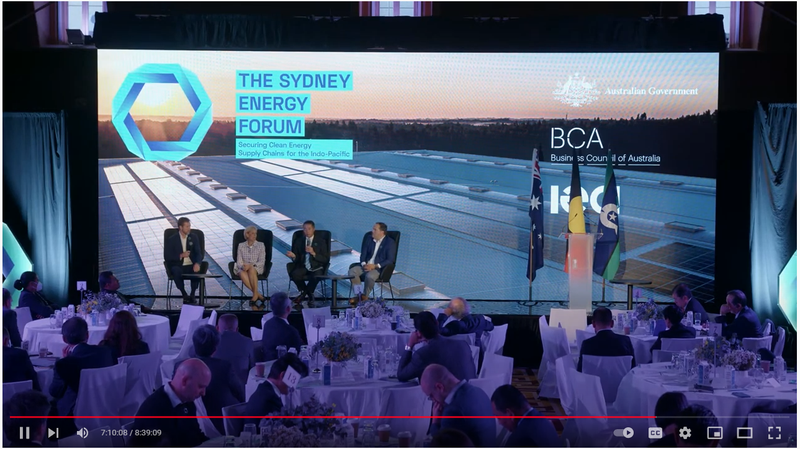
Who is speaking: (Watch Now)
- Dr Alan Bye (Chair) - Professor & director of critical minerals at Curtin University
- Amanda Lacaze - CEO & MD of rare earths producer Lynas Rare Earths
- Shoichiro Watanabe - CTO of battery manufacturer Panasonic Energy
- Simon Moores - CEO of battery minerals consultancy Benchmark Intelligence
Key Takeaways:
- Downstream manufacturing is moving faster than mineral supply - Downstream capacity is growing at 30%p.a, whereas upstream mine supply is only growing at 15%p.a. This creates supply chain dislocation.
- It takes 4x longer to build a producing mine than a battery facility - The supply chain dislocation is because constructing a battery manufacturing facility takes 12 to 24 months versus up to 10 years to bring a new mine into production.
- Car manufactures to move upstream to secure supply chains - Downstream stakeholders like automakers will need to take direct ownership in the mining industry to secure supply chains.
- Policy coordination required to incentivise investment in mining - Lynas CEO Lacaze touched on the need for policy coordination to encourage investment in critical minerals using a Japanese government program as an example.
- The US is starting to prioritise rare earths - Lynas recently received grant funding from the US government to build the only heavy rare earths separation plant outside of China.
- Batteries key to decarbonisation - The panel unanimously agreed that mining needs to be decarbonised. Batteries are a part of this, as much as they are a critical part of the EV revolution.
Our Relevant Investments:
- Our Battery Metals Investments
- Rare Earths: LNR, ARN
Our Take: A large part of our Portfolio is leveraged to the dislocation between downstream investment (battery manufacturing capacity) and upstream investment (new mine supply).
Most major automakers have committed to fully transitioning away from internal combustion engines - building out large scale “gigafactories” capable of producing EV batteries en masse.
However, raw materials production can't keep up the pace and scale. A focus on developing new mines is needed BEFORE there's a need for more battery metal production.
As mine development takes almost four times longer than building a battery manufacturing plant, there's a big strain on commodity prices.
A possible answer is for downstream automobile manufactures like Tesla or Volkswagen to move upstream and invest directly in mining industry.
This is happening.
Just recently global car maker Stellantis invested $76M in our 2020 Small Cap Pick of the Year Vulcan Energy Resources (ASX: VUL) to secure its ongoing lithium supply.
We have been waiting for this wave of capital to transform the fortunes of our mining Investments. It appears that the time has now come for downstream operators to take a more active role in supply chains.
We also note how a Japanese government led partnership with Lynas led to one of the largest rare earths miners in the world outside of China.
CEO Lacaze highlights how important securing critical mineral supply chains are for countries in the Indo-Pacific region, to the point where governments need to put in incentive structures to promote private capital investment into the mining.
The stocks in our Portfolios sit across the various stages of the mining company lifecycle, from exploration all the way to development.
The long term outlook for our investment in these companies looks fundamentally strong.
Downstream companies like Tesla, Volkswagen, and Stellantis will continue to take a more active role in securing critical mineral supply chains by investing in early development stage companies, while governments set incentive structures to attract private capital to mining.
A macro outlook on the global energy crisis
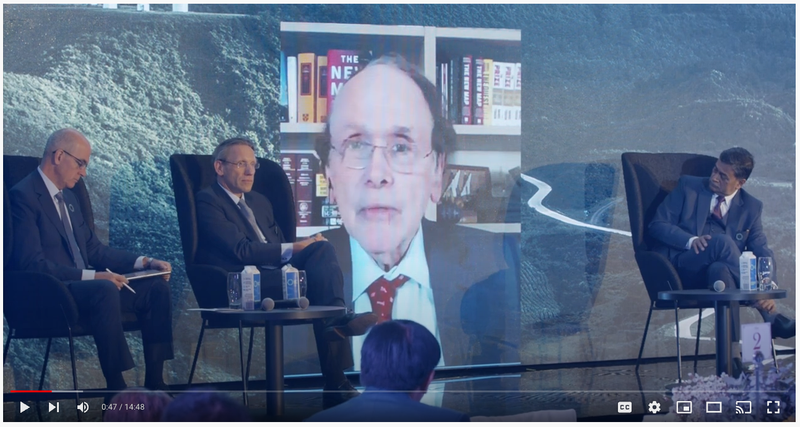
Who is speaking: Dr Daniel Yergin - Vice Chair of S&P Global, serves on the US Secretary of Energy Advisory Board (Watch Now)
Key Takeaways:
- Energy transitions require energy security - The conflict in Ukraine has pressured European nations to decouple from Russian energy sources and rapidly move towards renewable energy.
- Importance of a stable grid - As renewables become more important, so does the stability of supply. We should see a big focus on battery storage technology because without it, renewables can't carry the base load demand required.
- The north-south divide on climate policy - There is a divide on climate policy between developing and developed nations. Without banks financing infrastructure for conventional energy sources, the upwards mobility of developing countries - especially in Africa - is severely limited.
- We are going to need A LOT more minerals - The wind and the sun are free.but the materials required for renewable energy are not. Big questions are being asked of governments and industries about the scale and supply requirements of battery metals for the transition to renewable energy.
- Australia’s role as a resource rich country - A key theme in geopolitics is the ‘resilience of supply chains’ - as has been seen with semiconductors. Australia as a resource rich country has a very important role to play in the new supply chains for net zero.
Our Relevant Investments:
- Our Battery Metals Investments
- African Energy: IVZ
- Copper: TG1, RAS, AKN
Our Take: Dr Yurgin perfectly encapsulated the global energy landscape and the importance of local battery metals supply and conventional energy.
As societies replace “big oil with big shovels”, A LOT more mining is needed to meet the net zero targets - critical minerals in particular, especially copper.
Africa must play a big part in the future of energy. If the continent wants to improve its standards of living, it must leverage conventional energy sources. This highlights the importance of Invictus Energy’s (ASX:IVZ) oil and gas project to Zimbabwe.
Trusted voices like Dr Yurgin’s give credence to the big trade off questions being asked of governments. He provides a balanced rationale around why the path to net zero requires navigating the geopolitical landscape, while supporting both conventional energy and mineral mining supply.
Japan’s renewable energy initiatives (wind, solar, hydrogen)
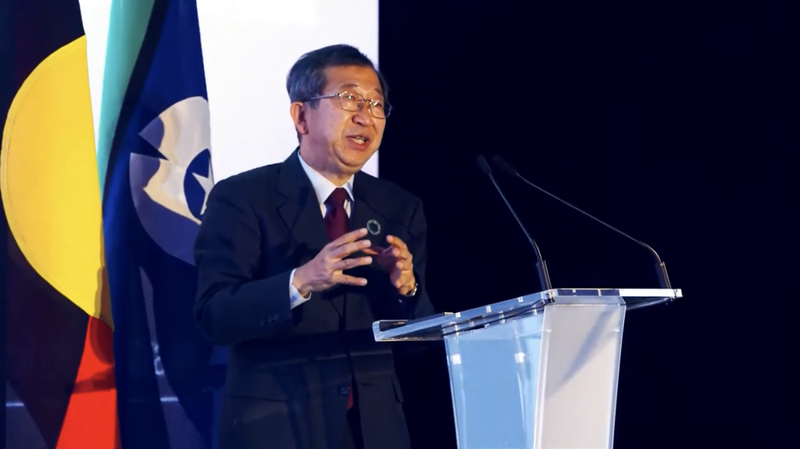
Who is speaking: Tatsuya Terazawa - Chairman & Chief Executive Officer of Institute of Energy Economics, Japan (IEEJ) (Watch Now)
Key takeaways:
- Japan is losing in the PV (solar) race to China - Japan’s share of the Photovoltaic (PV) for solar market has fallen in relation to China which dominates PV manufacturing. This is in part due to China’s ability to manufacture PV at scale.
- China dominates critical minerals supply and processing - Key renewables materials: copper, cobalt, nickel, lithium, rare earths, zinc, platinum group elements and aluminium are primarily processed in China.
- Geopolitical risk in a concentrated supply chain - 10 years ago China put an embargo on rare earths export to Japan over a fishing dispute, paralyzing Japan’s industrial industries for a period of time.
- Hydrogen commercialisation will require policy support - A ‘contract for difference’ policy may be implemented to improve the cost of hydrogen for end users.
- Developing the supply chain is key to hydrogen affordability - A big investment is needed in all aspects of the supply chain to make hydrogen affordable, from production, distribution and consumption.
Our Relevant Investments:
- Our Battery Metals Investments
- Aluminium: CAY
- Rare Earths: LNR, ARN
- PV/Silver: TMZ
- Zinc: BPM
- Hydrogen: PRL, EXR, MNB
Our Take: Terazawa made an interesting point: it took Japan 50 years to develop its LNG infrastructure. But with a goal of reaching net zero by 2050, the hydrogen revolution will need to cut the timeframe for a switch to a new energy source to 30 years.
Hydrogen stocks in our Portfolio include Province Resources (ASX:PRL) and Elixir Energy (ASX:EXR) (which interestingly has an MOU with Japan’s SoftBank Energy to develop EXR’s Mongolian green hydrogen project).
We also really liked this slide in Terazawa’s presentation when he talks about critical minerals — it looks a lot like our favourite McKinsey chart of the critical minerals for the renewable energy transition:
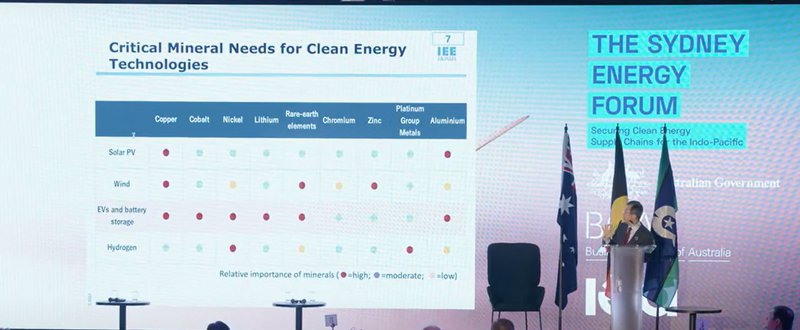
Germany’s renewable energy efforts in the context of Russia-Ukraine war
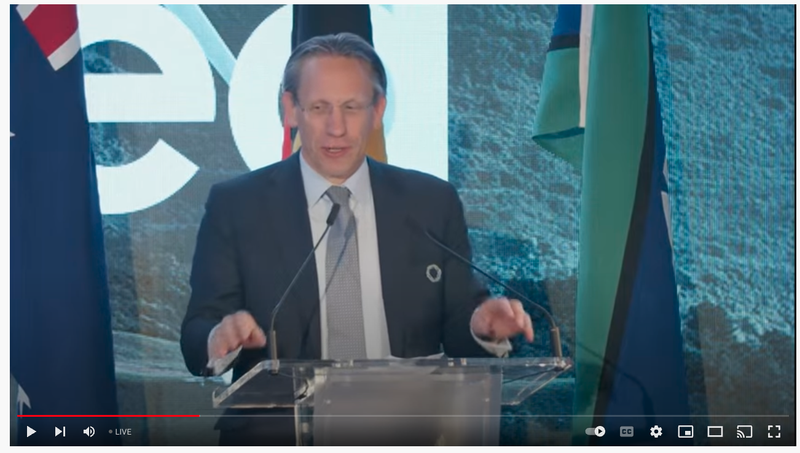
Who is speaking: Dr Jörg Kukies - State Secretary at the German Federal Chancellery (Watch Now)
Key takeaways:
- Energy security front of mind for Germany - Since the Russia-Ukraine war, Germany and Europe have realised the risks of having an undiversified energy supply chain. As a result, Germany is accelerating the drive towards renewables.
- Germany to decouple from Russian energy through fossil fuels - Germany will completely decouple from Russian coal by 1 August (oil to follow on 31 December). But it's not a straight line from fossil fuels to renewables - Germany will rely on fossil fuels (particularly gas, and including coal) to get there.
- 80% Renewables by 2023, 100% by 2035 - Germany’s roadmap to renewables includes a big LNG infrastructure push with the goal of 80% renewable energy power generation by 2030 and 100% by 2035.
- US/Qatar to fill the Russian gas void -The US and Qatar will step into the breach left by Russian gas following a negotiated supply agreement.
- Partnering with developing countries to reduce energy trade friction -There's a risk that pursuing carbon pricing could cause future trade friction, tariffs or trade wars. G7 is looking to mitigate this risk by partnering with developing countries to invest in their energy infrastructure.
Our Relevant Investments:
- Europe based Battery Metals: VUL, EMN, EMH, KNI
- Energy Stocks: EXR, 88E, IVZ, TEE
Our Take: Dr Kukies acknowledged the tough spot that Germany is in and how gas from non-Russian sources have a role in giving enough space for Germany to reach almost exclusively renewable energy.
We note our most successful Investment to date, Vulcan Energy Resources (ASX:VUL), is located in Germany and is aiming to supply their vast car manufacturing industry with sustainably produced lithium. VUL has also moved to provide geothermal energy for a local municipality, further helping Germany wean itself off fossil fuels.
Hydrogen and Ammonia
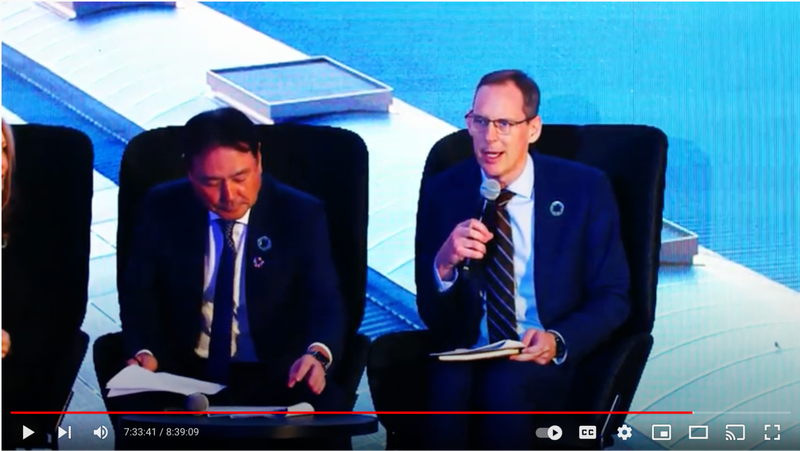
Who is speaking: (Watch Now)
- Sean Gregory (Chair) - Executive VP at Woodside
- Yoshinori Kanehana - Chairman of Kawasaki Heavy Industries
- Toshifumi Watanabe - CEO of J-Power
- Gretta Stevens - Executive of Climate Change for Blue Scope
Key Takeaways:
- Hydrogen is the ‘net zero’ answer to heavy industry - Hydrogen will play a big role in decarbonisation of the steel industry, heavy transport and shipping. Offtake partners will be critical in securing the finance for capital intensive hydrogen projects.
- Rome wasn’t built in a day, hydrogen won't be either - Growth for the industry will likely be incremental, from hydrogen production to supply chain infrastructure (like ports and shipping) to end use technologies.
- Japan is leading the way in hydrogen innovation - Japan is making big headway in hydrogen innovation with efficient hydrogen exports (liquid hydrogen shipping) and hydrogen power generation.
Our Relevant Investments:
Hydrogen: PRL, EXR, MNB
Our Take: The hydrogen industry is still in its infancy, but there is a big push from industry (heavy transport / steel) to make it a reality. The focus on technology, especially in shipping, will cut costs for hydrogen and make project economics more viable for financiers.
Interestingly, Woodside's big hydrogen production projects (like PRL’s) would be staggered rather than all at once. This makes projects more attractive, as the upfront capital investment required can be deployed over a number of years while project and technology is proven to be economical.
There was plenty more to the conference, but these were the panels and speakers most relevant to our Portfolios.
We have also highlighted some other discussions we found interesting:
- Mobilise finance and investment in renewable energy
- Importance of ‘standards’ for the industry and standardising the phrase “Net Zero”
- Transformative role of clean energy technologies
- Q&A lead by Andrew Forrest with key panel members
- Ultra Low Cost Renewables
Ultimately, the shift to a renewable energy future will take the collaboration and collective drive and leadership of industry, government, private sector and finance.
The global attention is there and our Portfolios are well placed to take advantage of this push over the next 10 years.
⏲️ Upcoming potential share price catalysts list
Results expected in the near term:
- GGE drilling its maiden helium well in Utah, USA (memo).
- IN PROGRESS: GGE has confirmed a new helium discovery and is now planning a follow up flow testing program in Q3 2022.
- Update: This week GGE confirmed that a workover rig had been secured ahead of a planned re-entering of the Jesse #1A well in August this year. We covered this news in the following Quick Take: Workover rig secured for flow testing program in August.
- PRL signing a Joint Development Agreement (JDA) with partner, Total Eren, to materially de-risk its WA Green Hydrogen Project (memo)
- IN PROGRESS: The signing of the JDA with Total Eren. PRL’s deadline to sign the JDA is now set at 31 July 2022.
- Update: No progress.
- IVZ to drill its giant gas prospect in Zimbabwe - we have been waiting two years for this event (memo).
- IN PROGRESS: Drilling is now scheduled for August. IVZ says it is considering three separate farm-in offers.
- Update: No progress.
- KNI is drilling its cobalt targets in Norway (memo).
- IN PROGRESS: KNI is in the middle of a ~3,000m drilling program. We are currently waiting for the assay results from the first batch of visible cobalt mineralisation intercepted at the drilling program.
- Update: No progress.
- BPM is drilling its lead/zinc prospect in the Earaheedy Basin close to Rumble Resources’ recent discovery (memo)
- IN PROGRESS: BPM is completing a ~7,500m AC/RC drilling program at its Hawkins project (along strike from Rumble’s discovery).
- Update: No progress.
- PFE is drilling its polymetallic (Hellcat) project (memo)
- IN PROGRESS: PFE is doing 1,700m of diamond drilling across four EM targets at its Hellcat project targeting base/precious metals.
- Update: No progress.
- LNR commencing drilling for rare earths along strike from Hastings Technology Metals. (memo)
- IN PROGRESS: LNR is still in the process of getting approvals so we are not sure exactly when drilling will occur. It may be later than most on the above list, but we are keeping an eye on progress.
- Update: No progress.
🗣️ Quick Takes
Macro (commodities): China considering US$1.1 trillion infrastructure stimulus
Macro (energy transition metals): Battery material supply putting EV revolution at risk
AKN: Drilling update at flagship base metals project
EV1: Some of the best graphite in the world?
GAL: Highest grade palladium-platinum assays yet
GAL: Second round of drilling completed, assays expected in August.
GGE: Second helium well being planned for Q3-4 2022
GGE: Workover rig secured for flow testing program in August.
GTR: Japan starting to recognise the importance of nuclear power
IVZ: African gas in high demand, EU looks to replace Russian supply
LRS: Metallurgical test work progressing at LRS’s lithium discovery
LRS: Potential strike zone at lithium discovery increased to 2.2km
MNB: Strategic cooperation agreement signed with cornerstone investor
MNB: Non-binding term sheet signed for US$25M debt facility
MNB: $25M capital raise secured with $15M cornerstone investment
PUR: Pursuit Establishes an At Call Funding Facility
PRL: Australian PM: “we see enormous potential in hydrogen”
TEE: Natural gas to speed up Australian transition to clean energy?
TMZ: Drilling commenced targeting resource growth
88E: Billion $ capped neighbour spuds production well
📰 This week on Next Investors
Mark Creasy Doubles Down on GAL in $20M Cap Raise (and so did we)
Last week GAL completed a $20.4M capital raise at $1.20 per share.
We have been following the GAL story for over two years and recently increased our position in line with the cap raise at $1.20.
A “change in substantial holding notice” released this week showed that mining billionaire Mark Creasy had invested a further $7M into GAL.
This wasn't the only buying Creasy was doing. In the weeks leading up to the placement, Creasy also purchased $2.26M on market at an average share price of $1.48 per share.
GAL also reported its highest grade assay results to date, measuring 8.25g/t palladium and 1.95g/t platinum over one metres - almost 4x the size of the initial discovery hole.
With GAL hitting sulphides in every single drillhole, we now know that:
- Over a 300m strike length in the southern/central sections;
- Over a 200m strike length over the northern sections; AND
- Remains open in ALL directions.
📰 Read our full Note: Mark Creasy Doubles Down on GAL in $20M Cap Raise (and so did we)
📰 In our portfolios 🧬 🦉 🏹
🦉Wise-Owl
CAY Goes Again after BFS, New CEO and a Surging Bauxite Price
This week we provided our thoughts on our bauxite Investment Canyon Resources’ (ASX:CAY) recent $5M cap raise at 4.5c per share, and a deep dive into the BFS.
The BFS is a key milestone towards securing strategic financing, offtake and government agreements.
Bauxite supply, and the broader aluminium industry, is facing persistent supply shocks due to geopolitical events, underlining the importance of new bauxite projects such as CAY’s Minim Martap Project.
With strong project economics indicated by the BFS and despite recent share price woes, we think CAY is in the right place at the right time to capitalise on this opportunity.
📰 Read our latest full Note: CAY Goes Again after BFS, New CEO and a Surging Bauxite Price
Have a great weekend,
Next Investors
General Information Only
S3 Consortium Pty Ltd (S3, ‘we’, ‘us’, ‘our’) (CAR No. 433913) is a corporate authorised representative of LeMessurier Securities Pty Ltd (AFSL No. 296877). The information contained in this article is general information and is for informational purposes only. Any advice is general advice only. Any advice contained in this article does not constitute personal advice and S3 has not taken into consideration your personal objectives, financial situation or needs. Please seek your own independent professional advice before making any financial investment decision. Those persons acting upon information contained in this article do so entirely at their own risk.
Conflicts of Interest Notice
S3 and its associated entities may hold investments in companies featured in its articles, including through being paid in the securities of the companies we provide commentary on. We disclose the securities held in relation to a particular company that we provide commentary on. Refer to our Disclosure Policy for information on our self-imposed trading blackouts, hold conditions and de-risking (sell conditions) which seek to mitigate against any potential conflicts of interest.
Publication Notice and Disclaimer
The information contained in this article is current as at the publication date. At the time of publishing, the information contained in this article is based on sources which are available in the public domain that we consider to be reliable, and our own analysis of those sources. The views of the author may not reflect the views of the AFSL holder. Any decision by you to purchase securities in the companies featured in this article should be done so after you have sought your own independent professional advice regarding this information and made your own inquiries as to the validity of any information in this article.
Any forward-looking statements contained in this article are not guarantees or predictions of future performance, and involve known and unknown risks, uncertainties and other factors, many of which are beyond our control, and which may cause actual results or performance of companies featured to differ materially from those expressed in the statements contained in this article. S3 cannot and does not give any assurance that the results or performance expressed or implied by any forward-looking statements contained in this article will actually occur and readers are cautioned not to put undue reliance on forward-looking statements.
This article may include references to our past investing performance. Past performance is not a reliable indicator of our future investing performance.


